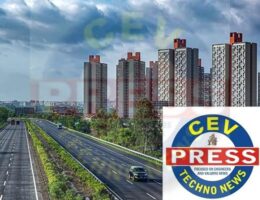IMPACT OF INFRASTRUCTURE DEVELOPMENT ON PROPERTY VALUES IN INDIA
Impact of Infrastructure Development on Property Values in India
Infrastructure development plays a pivotal role in shaping the real estate landscape of any country, and India is no exception. The correlation between infrastructure projects and property values is intricate, with various factors influencing the relationship. In recent years, India has witnessed a surge in infrastructure development initiatives aimed at enhancing connectivity, urbanization, and overall economic growth. This article delves into the significant impacts of infrastructure development on property values across different regions of India.
1. Enhanced Connectivity and Accessibility
One of the most apparent impacts of infrastructure development is the improvement in connectivity and accessibility. Projects such as metro rail networks, expressways, and road widening initiatives significantly reduce travel time and enhance accessibility to various parts of the city. Properties located in close proximity to these infrastructure developments experience a surge in demand, leading to an increase in their value. Improved connectivity not only attracts homebuyers but also boosts commercial real estate demand, especially in areas with high footfall potential.
2. Appreciation of Property Prices
Infrastructure projects often trigger a ripple effect, leading to the appreciation of property prices in surrounding areas. As infrastructure development progresses, amenities such as schools, hospitals, shopping complexes, and recreational facilities tend to follow suit. The emergence of these amenities further enhances the desirability of the locality, thereby driving up property prices. Investors keen on capitalizing on future appreciation opportunities often target areas undergoing significant infrastructure development.
3. Development of Satellite Townships
Infrastructure projects often catalyze the development of satellite townships on the outskirts of major cities. These townships offer a blend of affordable housing options, modern amenities, and improved infrastructure. As urbanization spreads beyond city limits, property values in these satellite townships witness steady appreciation. The availability of larger land parcels at comparatively lower prices attracts developers, resulting in the construction of integrated townships equipped with essential infrastructure and lifestyle facilities.
4. Impact on Commercial Real Estate
Infrastructure development not only influences residential property values but also has a substantial impact on commercial real estate. Proximity to key transportation hubs, business districts, and industrial corridors becomes a significant determinant of commercial property values. Areas with well-developed infrastructure witness heightened commercial activity, leading to increased demand for office spaces, retail outlets, and industrial units. The emergence of business parks and IT corridors further amplifies the demand for commercial properties in these regions.
5. Government Policies and Regulations
Government policies and regulations play a crucial role in facilitating infrastructure development and its subsequent impact on property values. Initiatives such as the Smart Cities Mission, Housing for All, and the Atal Mission for Rejuvenation and Urban Transformation (AMRUT) focus on enhancing urban infrastructure and housing availability across India. Additionally, regulatory measures such as the Real Estate (Regulation and Development) Act, 2016 (RERA) ensure transparency and accountability in the real estate sector, instilling confidence among homebuyers and investors.
Infrastructure development exerts a profound influence on property values in India. Enhanced connectivity, appreciation of property prices, development of satellite townships, impact on commercial real estate, and supportive government policies collectively contribute to the dynamic relationship between infrastructure development and real estate. As India continues to prioritize infrastructure enhancement as a key driver of economic growth, the synergy between infrastructure development and property values is expected to remain a dominant force shaping the country’s real estate landscape.


